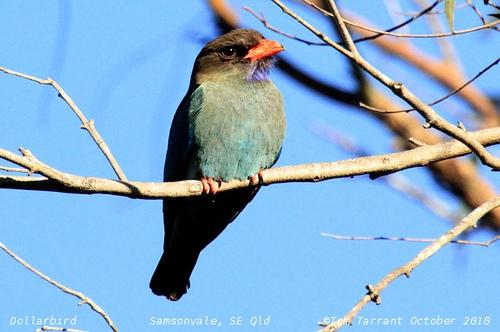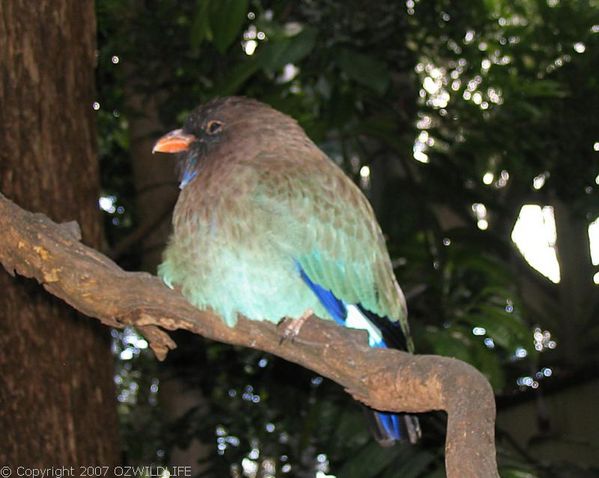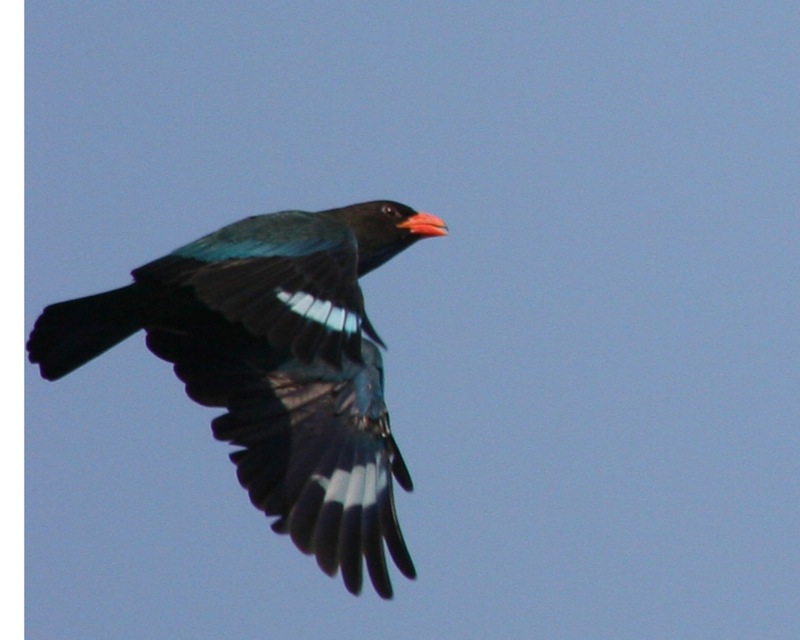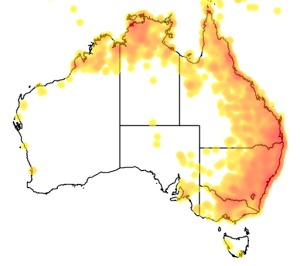Colours
Distinguishing features
It is mostly dark brown but with a significant amount of blue-green on the back and wings. Its belly and undertail coverts are light coloured, and it has glossy bright blue colouring on its throat and undertail. Its flight feathers are a darker blue. Its bill is short and wide and in mature animals is coloured orange-red with a black tip. It has very light blue patches on the outer parts of its wings which are highly visible in flight and for which it is named. The females are slightly duller than the males but the two are overall very similar.
Immature birds are much duller than the adults and do not have the blue colouring on their throats. They also have brown bills and feet instead of the red of the adults. (Wikipedia)
Size
- Up to 30 cm (Length of specimen)
Wingspan
- Wingspan data is not yet available.
Synonyms
Distribution
Distribution and habitat preferences
It is most commonly seen as a single bird with a distinctive upright silhouette on a bare branch high in a tree, from which it hawks for insects, returning to the same perch after a few seconds.
The birds breed in northern and eastern Australia between the months of September and March or April. The birds prefer open wooded areas with hollow-bearing trees to build nests in. They spend winters in New Guinea and nearby islands. (Wikipedia)
Audio recordings
Diet
It eats insects.




